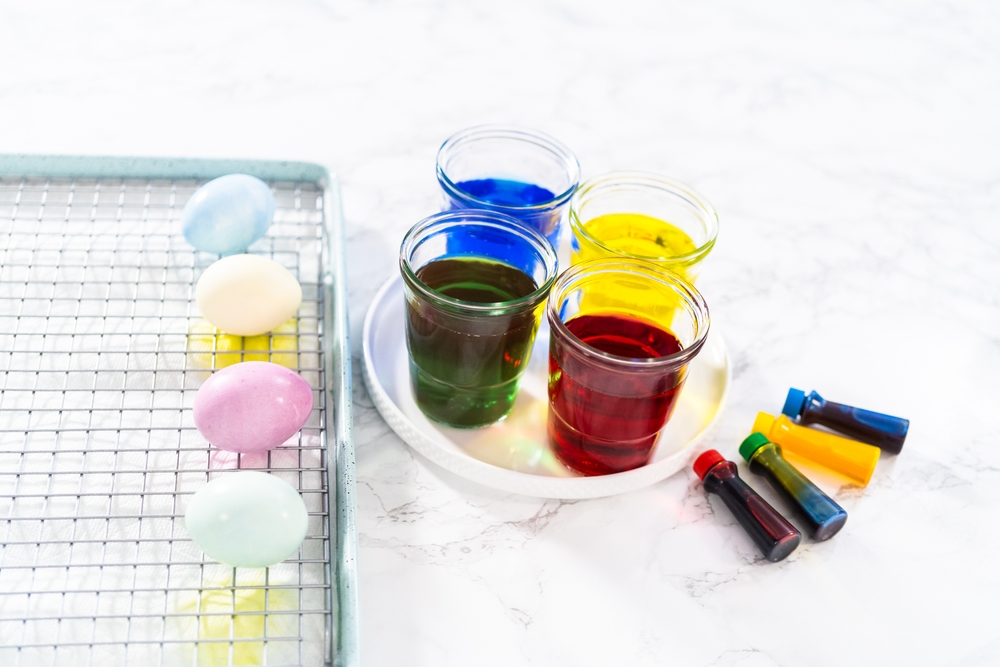As artificial food dyes appear in approximately 60% of store-bought foods, recent developments have sparked renewed debate about their safety. California’s groundbreaking 2024 decision to ban several common food dyes from school lunches highlights growing concerns about these synthetic additives.
Understanding food dyes
Synthetic food dyes, derived from petroleum, serve purely aesthetic purposes in our food supply. They are often added to enhance the visual appeal of processed foods, particularly for children. However, while these vibrant colors may be enticing, they offer no nutritional value. The growing scrutiny over their use raises important questions about their potential impact on health.
A closer look at synthetic food dyes
The FDA currently approves nine synthetic food dyes for use in the United States, with Red 40, Yellow 5, and Yellow 6 being the most prevalent. These dyes are found in a wide range of foods, from candies and sodas to cereals and desserts. Though widely used, the safety of these dyes remains a contentious topic, with some studies pointing to potential health risks.
Where dyes hide in your food
Many consumers are unaware of just how pervasive artificial dyes are in the modern food supply. Beyond the obvious sources like colorful candies and sodas, synthetic dyes can also be found in less expected places such as yogurt, salad dressings, and even some bread. The hidden nature of these additives makes it important for individuals to carefully examine food labels and consider alternative options.
The subtle risks of synthetic colors
Research has linked artificial dyes to various health concerns, particularly in children. For instance, Red 40 and Yellow 5 have been associated with hyperactivity and attention issues in children with sensitivities. Furthermore, some studies suggest a possible connection between certain dyes and allergic reactions or, in rare cases, carcinogenic effects. While the FDA maintains these dyes are safe in regulated amounts, growing public concern has prompted further investigation.
The impact on children’s behavior
One of the most widely discussed concerns about artificial food dyes is their potential effect on children’s behavior. Studies have shown that synthetic dyes may exacerbate symptoms of hyperactivity in children diagnosed with attention-deficit/hyperactivity disorder (ADHD). Even children without ADHD may experience mood swings, restlessness, or difficulty concentrating after consuming large amounts of dyed foods. This growing body of evidence has led some parents to adopt dye-free diets for their children, reporting noticeable improvements in behavior.
Making informed dietary choices
Reducing exposure to synthetic food dyes doesn’t have to mean completely overhauling your diet. Instead, small, mindful changes can help minimize risk. Start by reading ingredient labels more carefully, choosing products that use natural colorings like beet juice or turmeric instead of artificial dyes. Additionally, incorporating more whole, unprocessed foods into your meals can significantly reduce overall dye consumption.
The role of food manufacturers
In response to consumer demand, many food manufacturers have begun phasing out synthetic dyes in favor of natural alternatives. While this transition is promising, it’s still essential for consumers to remain vigilant. Not all “natural” labels guarantee the absence of synthetic additives, so understanding the ingredients in your food remains key.
The global perspective on food dyes
Internationally, regulations on artificial food dyes vary significantly. Some European countries have stricter guidelines, requiring warning labels on products containing certain dyes. These measures aim to inform consumers about potential health risks and encourage manufacturers to explore safer alternatives. In contrast, the United States relies on the FDA’s GRAS (Generally Recognized as Safe) designation, which has faced criticism for being too lenient.
The power of consumer advocacy
Consumer demand plays a crucial role in driving change within the food industry. As awareness of synthetic dye risks grows, more people are pushing for transparency and healthier options. Advocacy campaigns and petitions have successfully encouraged some companies to reformulate their products, demonstrating the collective power of informed consumers.
Practical steps forward
Maintaining a balanced diet is about more than just avoiding artificial colors; it’s about fostering overall health and well-being. Focus on incorporating nutrient-dense, minimally processed foods into your daily routine. By taking these steps, you can protect your health while supporting broader efforts to reduce harmful additives in the food supply.
Building healthier habits
Small changes, such as cooking meals at home, experimenting with natural food coloring in recipes, or supporting brands that prioritize clean labels, can make a significant difference. Over time, these habits contribute to a healthier lifestyle and reduce reliance on processed foods.
Conclusion
Artificial food dyes may enhance the visual appeal of our favorite snacks and drinks, but their potential risks cannot be ignored. By making informed choices and advocating for transparency in food labeling, we can take control of our diets and prioritize our health. Whether through personal decisions or broader societal change, the journey toward safer, healthier food begins with awareness and action.















